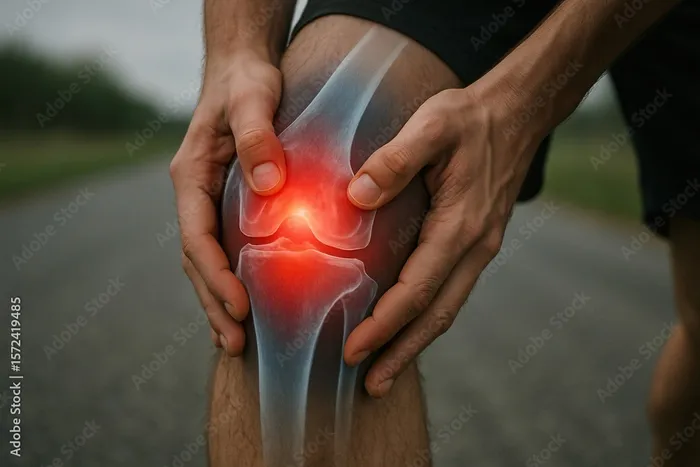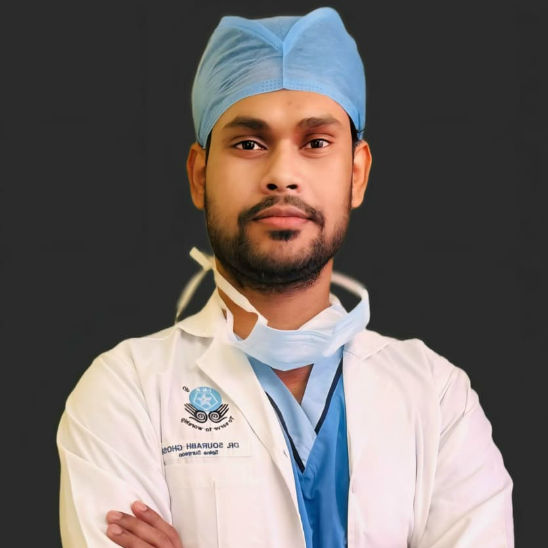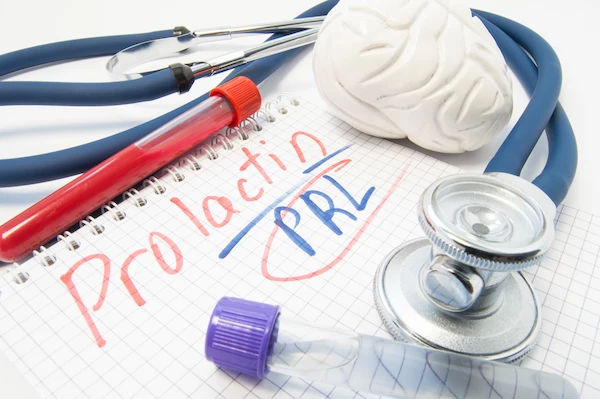Guide to Category/arthroscopy And Sports Injury
Explore how arthroscopy treats sports injuries with minimal incisions and faster recovery. Learn about procedures, rehabilitation, and the benefits of this modern joint surgery.

Written by Dr. Mohammed Kamran
Reviewed by Dr. Shaik Abdul Kalam MD (Physician)
Last updated on 7th Oct, 2025

Introduction
For athletes and active individuals, a sports injury can feel like a major setback. The thought of surgery, with its large incisions and long recovery, can be daunting. However, modern medicine offers a highly effective, minimally invasive solution: arthroscopy. This advanced surgical technique allows orthopaedic surgeons to diagnose and treat joint problems through tiny incisions, leading to less pain and a faster return to the activities you love. Whether you're dealing with a nagging knee issue from running or a sharp shoulder pain from tennis, understanding arthroscopy is the first step toward recovery. This guide will demystify the procedure, explore the common sports injuries it treats, walk you through what to expect from surgery to rehabilitation, and help you determine if it's the right choice for you. Our goal is to empower you with the knowledge to have an informed discussion with your doctor about your sports injury treatment options.
What is Arthroscopic Surgery? The "Keyhole" to Joint Repair
Arthroscopic surgery, often called "keyhole surgery," is a minimally invasive procedure used to visualise, diagnose, and treat problems inside a joint. The surgeon makes a few small incisions (each about the size of a keyhole, hence the name) around the joint. Through one incision, a miniature camera called an arthroscope is inserted. This camera projects high-definition images of the joint's interior onto a video monitor, giving the surgeon a clear view. Through the other small incisions, specialised surgical instruments are inserted to perform the necessary repairs, such as shaving torn cartilage, repairing ligaments, or removing loose fragments.
How Arthroscopy Differs from Traditional Open Surgery
The primary difference lies in the size of the incision and the approach to the joint.
- Traditional Open Surgery: Requires a large, single incision (often several inches long) to open up the joint fully. This provides direct access but involves cutting through more tissue, including muscles and tendons.
- Arthroscopic Surgery: Uses multiple small incisions (typically less than 1 cm each). This approach minimises damage to the surrounding soft tissues, which is the key to its significant benefits of minimally invasive joint surgery.
This fundamental difference translates into less post-operative pain, reduced scarring, lower risk of infection, and a significantly shorter recovery time, making it the preferred method for treating many common joint issues.
Consult a Specialist for the best advice
Common Sports Injuries Effectively Treated with Arthroscopy
Arthroscopy is versatile and can be used on various joints. Its most common applications are in treating injuries sustained during athletic activities.
Knee Arthroscopy: The Most Frequent Application
The knee is a complex, weight-bearing joint highly susceptible to sports injury. Knee arthroscopy is one of the most
commonly performed surgical procedures.
ACL Reconstruction
The anterior cruciate ligament (ACL) is crucial for knee stability. A tear is a common, often serious, injury in sports involving pivoting, like football, basketball, and skiing. Arthroscopic ACL reconstruction involves replacing the torn ligament with a graft from another part of the patient's body or from a donor. The precision of arthroscopy allows for accurate graft placement, which is vital for restoring full function.
Meniscus Repair and Meniscectomy
The meniscus is a C-shaped cartilage that acts as a shock absorber in the knee. A sudden twist can cause a meniscus
tear. Depending on the tear's size, location, and pattern, the surgeon will either repair it by stitching the torn pieces
together or perform a partial meniscectomy, trimming away the damaged tissue to relieve pain and mechanical
symptoms like locking.
Shoulder Arthroscopy: Restoring Stability and Function
The shoulder has the greatest range of motion of any joint, making it prone to instability and injury.
Rotator Cuff Repair
The rotator cuff is a group of muscles and tendons that stabilise the shoulder. Tears can occur from acute injury or chronic overuse. Arthroscopic repair involves reattaching the torn tendon to the bone using special anchors and sutures, a procedure that is far less invasive than traditional open surgery.
Treatment for Shoulder Impingement and Instability
Arthroscopy can address shoulder impingement (where tendons are pinched) by shaving bone spurs and inflamed tissue. It can also repair torn labrums (a rim of cartilage) and tighten loose ligaments to treat shoulder dislocations, common in contact sports.
Ankle, Elbow, and Hip Arthroscopy
While less common, arthroscopy is equally effective for other joints. It can remove bone spurs and loose bodies in the ankle and elbow, and in the hip, it's used to treat conditions like femoroacetabular impingement (FAI) and labral tears, which are increasingly diagnosed in athletes.
The Arthroscopy Procedure: What to Expect Step-by-Step
Understanding the process can alleviate anxiety. Most arthroscopic surgeries are performed as outpatient procedures, meaning you can go home the same day.
Pre-operative Planning and Preparation
Before surgery, you will have a thorough consultation with your orthopaedic surgeon. They will review your medical history, conduct a physical exam, and likely order imaging tests like an MRI to confirm the diagnosis. You may also need pre-operative clearance from your physician. This is the time to discuss the recovery time for knee arthroscopy or your specific joint, so you can plan for time off work and assistance at home.
The Day of Surgery: Anaesthesia, Incisions, and Repair
On the day of surgery, you will be given anaesthesia—either general (putting you to sleep) or regional (numbing the entire limb). The surgical area is cleaned and sterilised. The surgeon makes the small incisions and fills the joint with a sterile fluid to expand it, providing a clearer view. The arthroscope is inserted, and the surgeon examines the joint structures on the monitor. Once the problem is identified, the surgical instruments are introduced to perform the repair. After the procedure, the instruments are removed, the fluid is drained, and the tiny incisions are closed with stitches or steri-strips and covered with a bandage.
The Critical Role of Rehabilitation After Arthroscopy
Surgery is only half the battle. A structured and diligent physiotherapy after ACL reconstruction or any arthroscopic procedure is paramount to a successful outcome. Rehabilitation is typically phased.
Phase 1: Protecting the Repair and Managing Pain (Weeks 1-2)
The immediate goal is to control pain and swelling while protecting the surgical repair. This involves rest, ice, compression, and elevation (RICE). You may need to use crutches or a sling. Early, gentle movements prescribed by your physiotherapist are crucial to prevent stiffness.
Phase 2: Regaining Strength and Range of Motion (Weeks 3-6)
As initial healing occurs, therapy focuses on restoring the full range of motion and beginning gentle strengthening exercises. The therapist will guide you through specific movements that target the muscles around the joint without stressing the repaired tissues.
Phase 3: Returning to Sport and High-Level Activity (Months 3-9+)
This final phase is sport-specific. It involves advanced strengthening, proprioception (balance) training, and gradually reintroducing athletic movements. The timeline for a full return to sport varies greatly depending on the injury and procedure; an ACL reconstruction, for instance, typically requires 6-9 months or more of dedicated rehab. If your progress stalls during rehabilitation, consulting a physiotherapist or doctor online with Apollo24|7 can provide timely guidance to keep your recovery on track.
Benefits and Potential Risks of Arthroscopic Surgery
Benefits:
- Less Tissue Trauma: Smaller incisions mean less damage to muscles and soft tissues.
- Reduced Pain: Less tissue damage translates to significantly less post-operative pain.
- Faster Recovery Time: Patients often return home and to light activities much quicker than with open surgery.
- Lower Risk of Infection: Smaller incisions reduce the exposure of internal tissues.
- Outpatient Procedure: Most surgeries are done without an overnight hospital stay.
- Improved Cosmetic Result: Minimal scarring.
Potential Risks:
While generally safe, as with any surgery, risks include infection, blood clots, nerve or blood vessel damage, and
instrument breakage. These complications are rare. It's important to discuss your individual risk factors with your
surgeon.
Is Arthroscopy Right for You? Exploring Non-Surgical Alternatives
Arthroscopy is not always the first-line treatment. Many sports injuries respond well to conservative management. Your doctor will likely recommend trying non-surgical options first, unless the injury is severe (like a complete ligament tear causing instability). Alternatives include:
- Rest and Activity Modification: Avoiding activities that cause pain.
- Physiotherapy: Strengthening muscles around the joint to improve stability.
- Medications: Anti-inflammatory drugs to reduce pain and swelling.
- Injections: Corticosteroid injections to reduce inflammation.
The decision for surgery is made when conservative treatments fail to provide relief, or when the nature of the injury (e.g., a loose body in the joint or a significant ligament tear) requires mechanical intervention. If you are experiencing persistent joint pain and are unsure about the signs you need arthroscopic surgery, it's best to consult an orthopaedic specialist for an accurate diagnosis and personalised treatment plan. You can book a physical visit to a specialist with Apollo24|7 to get a comprehensive evaluation.
Conclusion
Arthroscopy has revolutionised the treatment of sports injuries, offering a path to recovery that is far less daunting than traditional surgery. By enabling precise repairs through tiny incisions, it minimises the physical impact on your body and maximises your potential for a full return to an active lifestyle. Remember, the journey involves a partnership between you, your skilled surgeon, and your physiotherapist. Being informed about the procedure, the recovery process, and the realistic expectations empowers you to take an active role in your healing. If you suspect a significant joint injury, don't hesitate to seek professional medical advice to explore all your options, including the potential role of arthroscopic surgery in getting you back in the game.
Consult a Specialist for the best advice
Consult a Specialist for the best advice

Dr. Anil Pradeep Jadhav
Orthopaedician
23 Years • MBBS MS (Ortho)
Nashik
Apollo Hospitals Nashik, Nashik
(25+ Patients)

Dr. Bhanu Prakash Reddy Rachamallu
Orthopaedician
24 Years • MBBS , D'ORTHO, DNB (ORTHO), Mch (ORTHO), Fellow in ARTHROPLASTY
Hyderabad
Apollo Hospitals Jubilee Hills, Hyderabad
(75+ Patients)

Dr. Rupam Chowdhury
Orthopaedician
10 Years • MBBS, DNB (Ortho.)
Kolkata
MCR SUPER SPECIALITY POLY CLINIC & PATHOLOGY, Kolkata

Dr. Sourabh Ghosh
Orthopaedician
4 Years • MBBS, MS (Orthopaedics), Fellowship in Spine Surgery
East Midnapore
VIVEKANANDA SEBA SADAN, East Midnapore

Dr. Keshav Digga
Orthopaedician
14 Years • MBBS, MS Orthopaedics, FIASM, FIMISS
Kolkata
DIGGA HEALTHCARE, Kolkata
Consult a Specialist for the best advice

Dr. Anil Pradeep Jadhav
Orthopaedician
23 Years • MBBS MS (Ortho)
Nashik
Apollo Hospitals Nashik, Nashik
(25+ Patients)

Dr. Bhanu Prakash Reddy Rachamallu
Orthopaedician
24 Years • MBBS , D'ORTHO, DNB (ORTHO), Mch (ORTHO), Fellow in ARTHROPLASTY
Hyderabad
Apollo Hospitals Jubilee Hills, Hyderabad
(75+ Patients)

Dr. Rupam Chowdhury
Orthopaedician
10 Years • MBBS, DNB (Ortho.)
Kolkata
MCR SUPER SPECIALITY POLY CLINIC & PATHOLOGY, Kolkata

Dr. Sourabh Ghosh
Orthopaedician
4 Years • MBBS, MS (Orthopaedics), Fellowship in Spine Surgery
East Midnapore
VIVEKANANDA SEBA SADAN, East Midnapore

Dr. Keshav Digga
Orthopaedician
14 Years • MBBS, MS Orthopaedics, FIASM, FIMISS
Kolkata
DIGGA HEALTHCARE, Kolkata
More articles from General Medical Consultation
Frequently Asked Questions
1. How long does it take to recover from a knee arthroscopy for a meniscus tear?
Recovery varies. For a simple meniscectomy (trimming), you may be walking normally in a few days to a week, with a return to sports in 4-6 weeks. For a meniscus repair (stitching), the recovery is longer, often requiring 3-6 months of restricted movement and physiotherapy to allow the repair to heal.
2. Will I need physical therapy after arthroscopic shoulder surgery?
Yes, absolutely. Physical therapy is essential after any arthroscopic procedure, especially shoulder surgery. It is critical for regaining range of motion, rebuilding strength, and ensuring a safe return to daily activities and sports.
3. What are the signs that I might need arthroscopic surgery?
Common signs include persistent joint pain that doesn't improve with rest and medication, joint locking or giving way, significant swelling, and a feeling of instability. These symptoms, especially after an injury, warrant an evaluation by an orthopaedic doctor.
4. Is arthroscopy better than open surgery?
For the conditions it is designed to treat, arthroscopy is generally preferred due to its minimally invasive nature, which leads to the benefits of less pain, faster recovery, and smaller scars. However, for very complex revisions or certain fractures, open surgery may still be necessary.
5. Can an MRI show everything, or is diagnostic arthroscopy still needed?
Modern MRIs are extremely accurate, and diagnostic arthroscopy (surgery purely for diagnosis) is much less common today. Arthroscopy is now primarily a therapeutic procedure, where the surgeon goes in with a specific repair plan based on MRI findings, but can also fully assess the joint visually during the operation.




